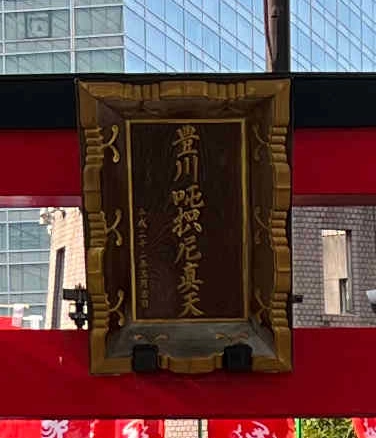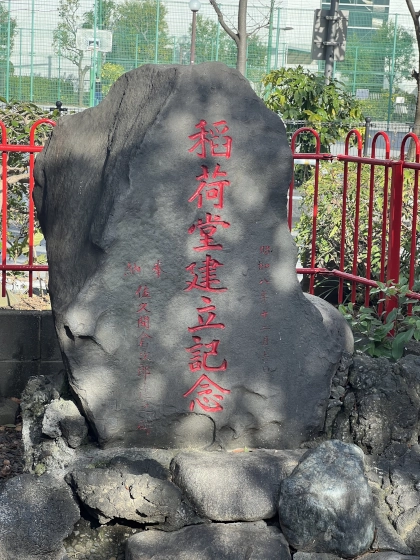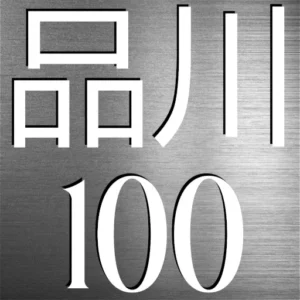What is the Inari-do 稲荷堂?
Shinagawa’s Inari-do 稲荷堂 is also known as the Toyokawa Inari-do (豊川稲荷堂) or Toyokawa Dakini Shinten (豊川吒枳尼真天). Built in 1933, during the birth of the Greater Tokyo City on the reclaimed land of Yatsuyama as a protective ward. A ward against the kimon, the north-eastern unlucky direction. Hence, its place in the NE corner of the newly created Shinagawa ward1. The term “kimon” (鬼門) or “demon gate” refers to the northeast considered an unlucky direction through which evil spirits passed. The Buddhist guardian deity enshrined here is Toyokawa Dakini Shinten.

This small shrine is not a plain old Shinto shrine, 神社 (jinja), but instead a hall 堂 (dou). Halls are shrines typically found inside Buddhist temples. The deity Toyokawa Dakini Shinten, which has the same fox characteristics of Inari – the Shinto god of fertility, rice, agriculture, industry, and worldly success.) So though it has many characteristics of a shrine has more to do with Sōtō Zen Buddhism than being purely Shinto. Likely a consequence of the syncretism between Buddhism and Shinto – the merging of beliefs.
Inscriptions at Inari-do

The plate above the entrance says “豊川吒枳尼真天平成二十二年三月吉日” which translates to “Auspicious day in March of the 22nd year of Heisei, Toyokawa Dakini Shinten.” In this context, “Heisei 22” corresponding to 2010 in the Gregorian calendar.

The inscription on the monument “稲荷堂建立記念 奉納佐久間倉次郎 建之碑昭和八年十二月吉日” translates to “Commemorative monument for the establishment of the Inari Hall, dedicated by Kurajiro Sakuma on an auspicious day in December of the eighth year of Showa.” Showa 8 corresponds to 1933 in the Gregorian calendar. This inscription typically signifies that Kurajiro Sakuma either funded or played a significant role in the establishment of the Inari Hall.
🧭 Visitor Information
Address: 1-8-16 Kitashinagawa, Shinagawa-ku, Tokyo 140-0001
Access:
Shinagawa Station (Tōkaidō Main Line, Yamanote Line, Keikyū Line)
Kitashinagawa Station (Keikyū Line)
Best time to visit: Early morning or at dusk for quiet atmosphere and dramatic light
Admission: Free
- In 1933 before further land reclamation to the east this spot would have been quite close to the coast of Tokyo bay. The most north-eastern part of the new Shinagawa ward that was created.
Context: In 1932 huge chunks of suburban and rural districts were merged into Tokyo City. This added 20 new wards to the original 15 that were established in the Meiji era in 1878. The new city was called Greater Tokyo (大東京). Shinagawa was one of these wards. ↩︎
Where is it?
| what3words | ///directly.cabbage.tolls |
| latitude longitude | 35.6247805 139.7431666 |
| Nearest station(s) | Shinagawa Station, Kitashinagawa Station |
| Nearest public conveniences | In the nearby Higashi Yatsuyama Park |
Show me a sign.

One of the older signs with no romaji or translation from Japanese.
Withervee says…
It’s a pretty enough little shrine/hall with its red flags and Torii gate. Cherry blossoms nearby in sakura season. I was slightly irritated by the a man pacing to and fro across the entrance smoking – presumably taking a lunch break.

